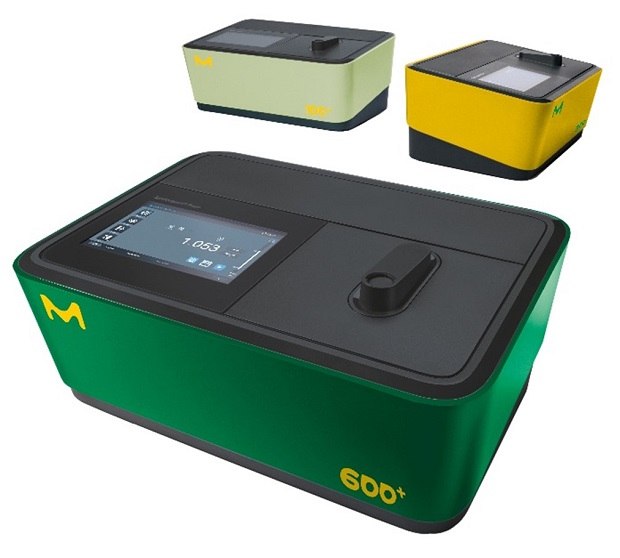Photometric Determination of Total Nitrogen in Soil Subsequent to Extraction With a Calcium Chloride Solution
Abstract
This protocol outlines the photometric determination of total nitrogen in soil using the dimethyl phenol (DMP) method after extraction with a calcium chloride solution and digestion by Koroleff’s method. The process provides an alternative to the Kjeldahl method, enabling precise measurement of nitrogen, a critical nutrient for plant growth. Spectroquant® test kits and spectrophotometers are used for analysis, ensuring accurate nitrogen content assessment to support soil health and agricultural productivity.
Section Overview:

Spectroquant® spectrophotometers - Prove 100 plus, Prove 300 plus, & Prove 600 plus
Introduction
Plants require nitrogen as a nutrient for their healthy growth and development, and nitrogen is imperative for protein synthesis. Three major sources of nitrogen for plants are ammonia (NH3), nitrates (NO3-), and nitrites (NO2-). Extensively, ammonia and nitrates present in fertilizer and manure-amended soil function as major nitrogen suppliers for plants. One parameter of soil health for growing crops is the concentration of total nitrogen and hence it is important to test total nitrogen in soils. The Kjeldahl method, or Kjeldahl digestion is a widely used analytical method to determine organic and ammonium nitrogen1. In this application note, we detail an alternative, quantitative photometric determination of total nitrogen test of soils (not just organic and ammonium nitrogen) by dimethyl phenol (DMP) method, after extraction with calcium chloride solution and digestion by Koroleff’s method.
Reagents, Instruments and Materials
Total Nitrogen Test Kits/Reagents
For the measurement, one of the following Spectroquant® test kits is necessary:
- Spectroquant® Nitrogen Cell Test (1.14537)
- Spectroquant® Nitrogen Cell Test (1.14763)*
- Spectroquant® Nitrogen Cell Test (1.00613)*
*not compatible with Move 100
Instrument(s) & Devices
For the measurement, one of the following Spectroquant® photometers is necessary:
- Spectroquant® VIS Spectrophotometer Prove 100 Plus (1.73026)
- Spectroquant® UV/VIS Spectrophotometer Prove 300 Plus (1.73027)
- Spectroquant® UV/VIS Spectrophotometer Prove 600 Plus (1.73028)
- Spectroquant® Colorimeter Move 100 (1.73632)
Also, legacy systems
- Spectroquant® Spectrophotometer Prove 100/300/600
- Spectroquant® Photometer NOVA 30/60/60A
For the measurement, one of the following devices is necessary:
- Spectroquant® Thermoreactor TR 320 (1.71200)
- Spectroquant® Thermoreactor TR 420 (1.71201)
- Spectroquant® Thermoreactor TR 620 (1.71202)
Software for Data transfer
- Optional Spectroquant® Prove Connect to LIMS software package (Y.11086) to transfer your data into an existing LIMS system.
Instrument Accessories
- Rectangular cells 10 mm (1.14946) and/or
- Rectangular cells 20 mm (1.14947) and/or
- Rectangular cells 50 mm (1.14944)
Other Reagents and Accessories
- Calcium chloride dihydrate for analysis (1.02382)
- Water for analysis (1.16754)
- Charcoal activated for soil tests
Experimental Procedure
Reagent Preparation
- Calcium chloride solution 0.025 mol/L: Dissolve 3.68 g of calcium chloride dihydrate for analysis with 1 L of water to prepare a 0.025 mol/L calcium chloride solution.
Sample Preparation
- In a glass bottle mix 50 g of naturally moist sample, free from coarse stones, with 100 mL of a calcium chloride solution 0.025 mol/L.
- Add a spatula-tip full of charcoal activated for soil tests and shake the closed bottle in a shaking machine for 1 hour (alternative stir in a beaker).
- Let the suspension settle and filter it through a folded filter.
- For determination of the water content dry a similar sample to constant weight in the drying kiln at 105 °C.
- A drying of the sample before the determination is not advisable because of the fast change in the nitrogen forms. The analysis should take place very quickly.
- Storing the sample in plastic bags at room temperature changes the analysis values after a short time already.
Analysis
Determine with one of the above-mentioned test kits.
Calculation
Total nitrogen content in mg/kg N = analysis value in mg/L N x 2
See more applications for photometry at Protocols and Application Notes
References
如要继续阅读,请登录或创建帐户。
暂无帐户?